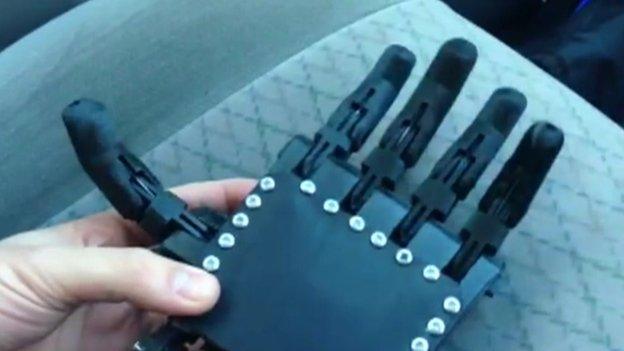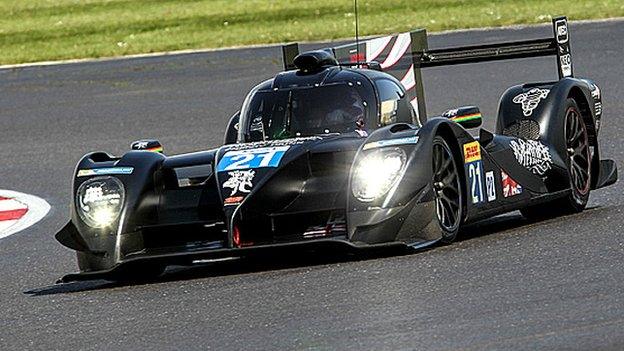Leamington Spa teenager has hand made on 3D printer
- Published

The £30 artificial hand was created on a 3D printer
A teenager born without fingers on his hand has had a £30 artificial version created for him on a 3D printer.
Joe Oxenbury, from Leamington Spa, was born six weeks premature with an upper limb deficiency in his left hand.
His father Chris said he had found out about 3D printing techniques on Facebook and contacted a network of volunteers to access the technology.
He said traditional prosthetic hands were very expensive and "more cosmetic than workable".
'Funky and robotic'
Mr Oxenbury said he was "lost for words" when he saw the printed hand, which is made from chrome and cost £30 to produce.
"When Joe was born, I thought some kind of technology would be able to help him, and now, 15 years on, we are there," he said.
He said the 3D-printed version was "more organic" than previous prosthetics.
"This new hand feels like part of him," he said.
"When he rotates his wrist, his fingers clench."
Mr Oxenbury said he now wanted to invest in a 3D printer and use the design to help other children.

Joe Oxenbury, from Leamington Spa, was born six weeks early
"As his fingers get bigger, or if anything breaks down on the hand, this technology means you can just print it out," he said.
James Holmes-Siedle, a volunteer from 3D-printing website Enablingthefuture, owns the printer that created the hand.
"The hand takes about 20 hours to print," he said. "It's a complicated bit of technology."

What is 3D printing?
3D printing is a type of additive manufacturing where successive layers of materials are laid down in different shapes
Objects can be printed from computer-aided design software
3D printing has been used in industry since 1989
It is increasingly being used in all kinds of design, from fashion to the motor industry

Charities said that if the technique improves it could revolutionise prosthetics.
"It's something that's moving really fast because printers are so accessible," said Jo Dixon, the national co-ordinator at Reach, a charity that works with children with an upper limb deficiency.
"The 3D hands are not as all-singing, all-dancing as they could be, but prosthetic hands for children can be very heavy and cumbersome.
"The 3D printed ones are much lighter and they look funky and robotic."
- Published9 September 2014
